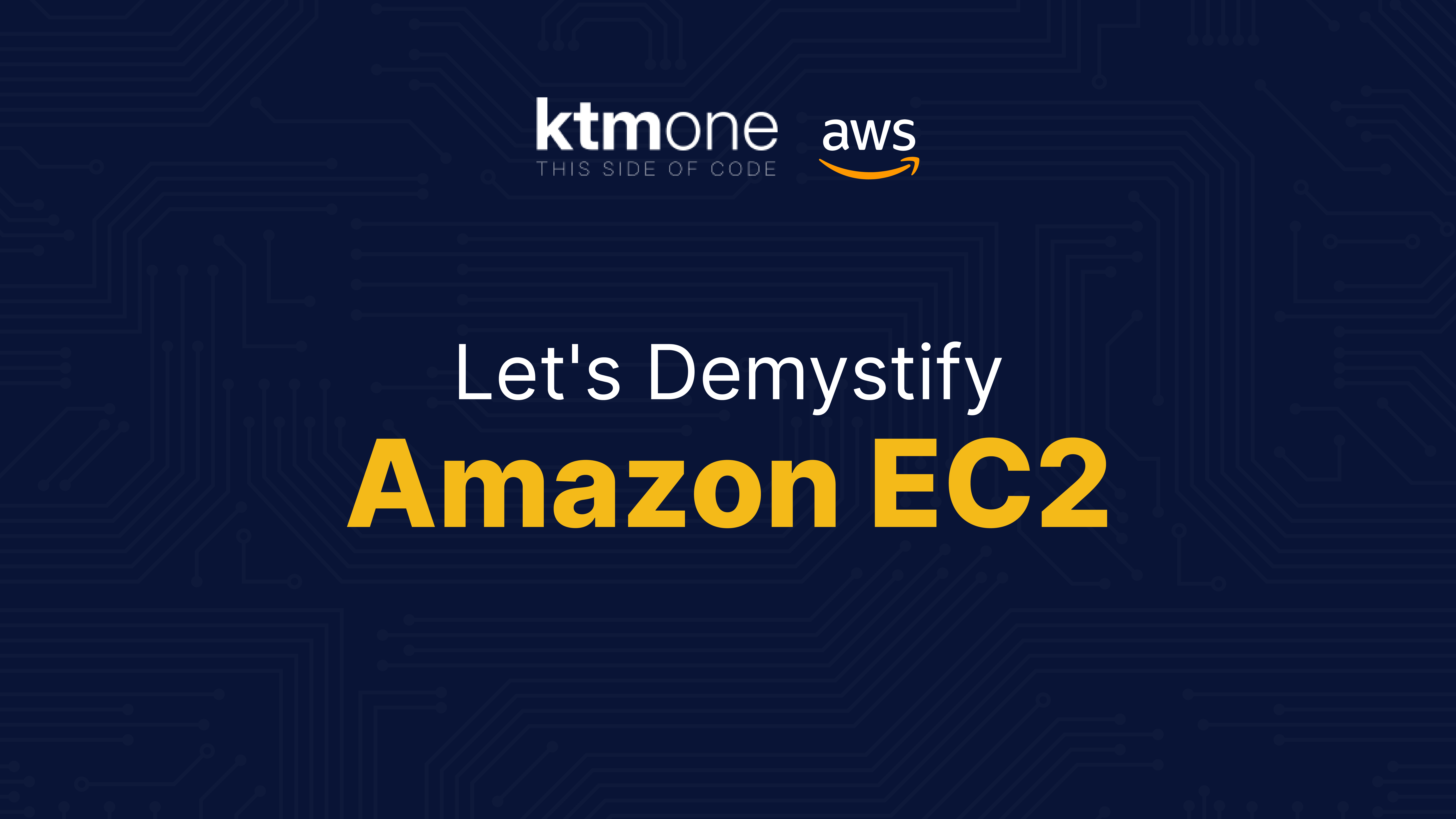Biweekly AWS Bytes: Week 3 - Let's Demystify Amazon EC2
Welcome to Week 3 of KTM One's biweekly AWS blog series! Following our dive into S3 and RDS, this week we're exploring the foundational service that powers countless applications on AWS: Amazon EC2 (Elastic Compute Cloud).
What is Amazon EC2?
Amazon EC2 provides secure, resizable compute capacity in the cloud. It makes web-scale cloud computing easier for developers by eliminating the need for upfront hardware investments and allowing you to launch virtual servers (instances) in minutes instead of months. Think of it as renting powerful computers in Amazon's data centers, but with the flexibility to configure them exactly how you need and scale them instantly based on demand.
Key Highlights
- On-Demand Virtual Servers: Launch instances with your choice of processor, storage, networking, and operating system in minutes using pre-configured Amazon Machine Images (AMIs). No more waiting weeks for hardware procurement.
- Diverse Instance Types: Choose from dozens of instance types optimized for compute, memory, storage, or accelerated computing workloads, including GPU instances for machine learning and high-performance computing that would cost millions to build on-premises.
- Built for Scale: Automatically scale your compute capacity up or down using Auto Scaling Groups based on demand, CPU utilization, or custom metrics, ensuring you only pay for what you use while maintaining performance.
- Highly Available: Deploy instances across multiple Availability Zones for fault tolerance and use Elastic Load Balancing to distribute traffic across healthy instances, achieving 99.99% uptime.
- Complete Control: Get root access to your instances with full control over the operating system, software installation, and configuration to meet your specific requirements, just like physical servers but without the hardware headaches.
- Secure by Default: Run instances in Amazon VPC with security groups acting as virtual firewalls, encrypt data at rest and in transit, and use IAM roles for secure access to other AWS services.
- Flexible Pricing: Pay by the second with On-Demand instances, save up to 75% with Reserved Instances for predictable workloads, or use Spot Instances for fault-tolerant workloads at up to 90% savings.
- Seamless Integration: Connect easily to other AWS services like S3 for storage, RDS for databases, CloudWatch for monitoring, and hundreds of other services through the AWS ecosystem.
Top Use Cases of Amazon EC2
Host Web and Mobile Applications
Amazon EC2 serves as the compute backbone for modern web applications, from simple blogs to complex enterprise platforms serving millions of users. The beauty lies in EC2's ability to handle unpredictable traffic patterns - imagine your startup's app going viral overnight, or your e-commerce site experiencing Black Friday traffic spikes. Traditional infrastructure would buckle, but EC2 automatically scales to meet demand.
Consider a typical web application architecture: your application code runs on EC2 instances behind a load balancer, connecting to an RDS database for persistent data and S3 for file storage. When traffic increases, Auto Scaling launches additional EC2 instances within minutes. When traffic subsides, it terminates unused instances, keeping costs optimized. This elasticity transforms how businesses think about capacity planning - instead of over-provisioning for peak loads, you scale dynamically.
Common Problem Statements:
- How can we handle unpredictable traffic spikes without overprovisioning expensive hardware?
- What's the best way to ensure our application stays online even if a server fails?
- How do we scale our infrastructure automatically as our user base grows?
- Can we deploy application updates without downtime or service interruption?
Solution Architecture:
Deploy your web application across multiple EC2 instances in different Availability Zones behind an Application Load Balancer that performs health checks and routes traffic only to healthy instances. Configure Auto Scaling Groups to automatically adjust capacity based on CPU utilization, memory usage, or custom application metrics like queue depth. Store static assets in S3 with CloudFront CDN for global delivery, use RDS Multi-AZ for database high availability, and implement blue-green deployments for zero-downtime updates. This architecture can handle everything from 100 to 100 million users with the same foundational components.
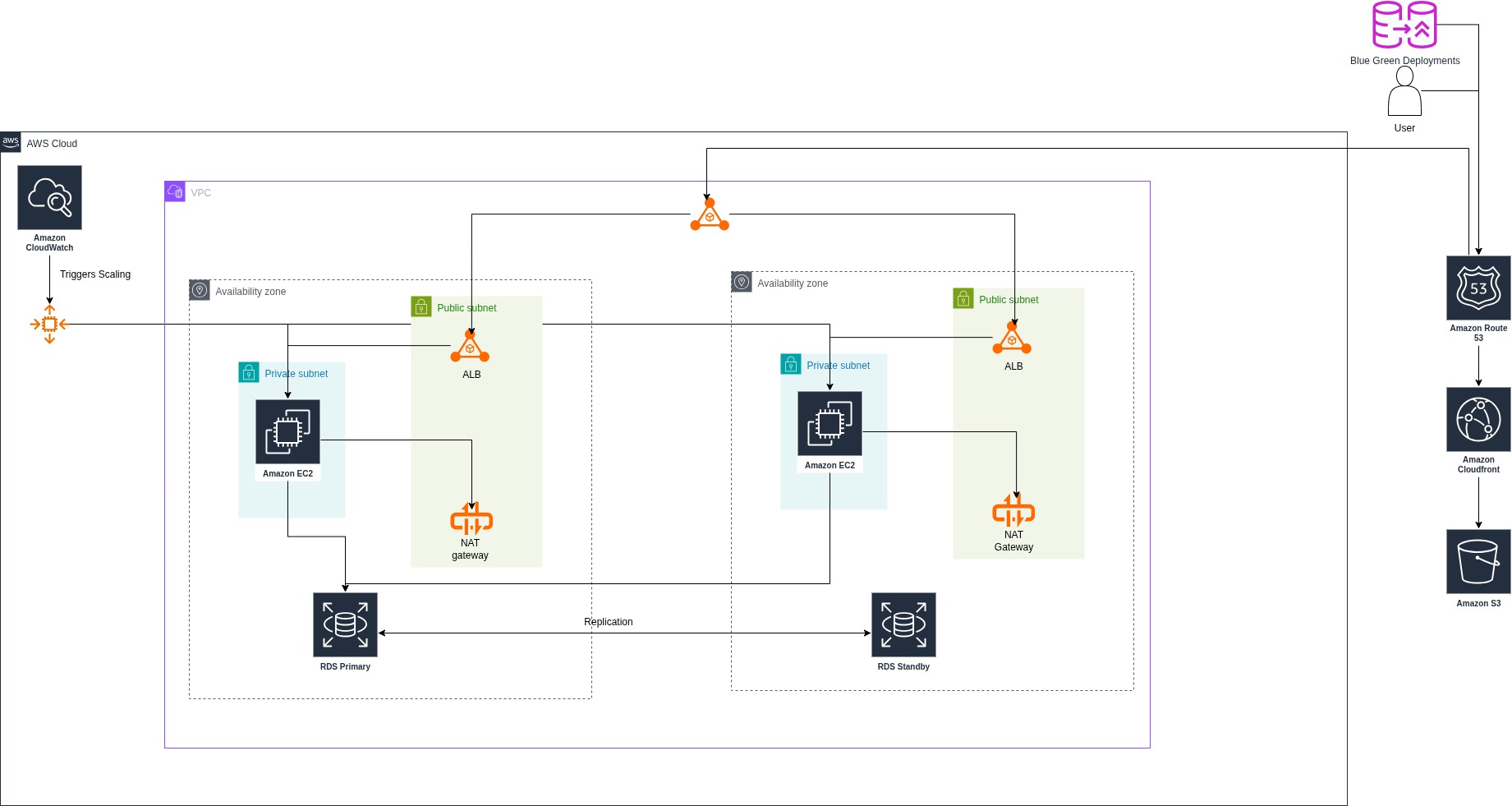
Development and Testing Environments
EC2 revolutionizes how development teams work by providing instant access to complete, isolated environments that mirror production systems. Gone are the days of developers waiting weeks for new hardware or fighting over shared development servers. With EC2, each developer can spin up their own environment in minutes, complete with the exact operating system, middleware, and dependencies needed for their project.
The power extends beyond individual development - imagine running comprehensive testing suites that require dozens of different server configurations, or performing load testing that simulates thousands of concurrent users. EC2 makes these scenarios economically feasible by allowing you to provision massive compute resources for short periods, then shut them down when testing completes.
Common Problem Statements:
- How can we give every developer their own isolated development environment without breaking the budget?
- What's the most efficient way to run automated testing that requires multiple server configurations?
- How do we ensure our testing environment exactly matches our production setup?
- Can we automatically provision and destroy environments as part of our CI/CD pipeline?
Solution Architecture:
Create standardized AMIs containing your development tools, runtime environments, and application dependencies. Use Infrastructure as Code tools like CloudFormation to define complete environment stacks that developers can launch from templates. Integrate with CI/CD systems like Code Pipeline to automatically provision test environments for each code branch, run automated tests, and tear down resources when testing completes. For cost optimization, use Spot Instances for non-critical testing workloads and schedule development environments to automatically stop outside business hours.
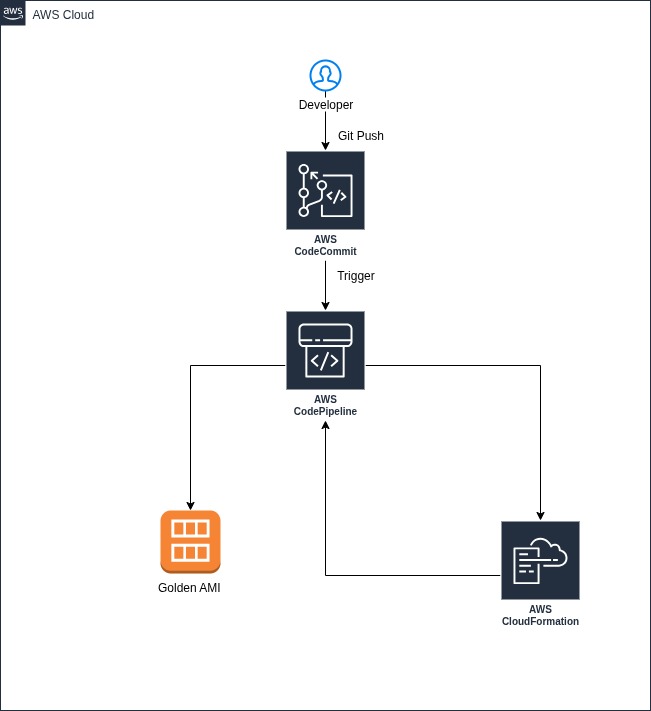
Big Data Analytics and Processing
Organizations today generate terabytes to petabytes of data, from application logs to customer behavior analytics. EC2 provides the flexible and scalable backbone needed to process this data efficiently using popular big data frameworks like Apache Hadoop, Apache Spark, and Presto.
With EC2, you can create temporary clusters for batch processing jobs or persistent clusters for real-time streaming analytics. Since EC2 supports various instance types (including compute-optimized and memory-optimized ones), you can tailor your analytics infrastructure based on data size and processing needs.
Common Problem Statements:
- How can we process large volumes of data quickly without buying expensive, dedicated servers?
- What's the most cost-effective way to run distributed data processing jobs?
- How do we integrate data pipelines with storage and visualization tools in AWS?
Solution Architecture:
Launch an EMR (Elastic MapReduce) cluster on EC2 to process large-scale datasets stored in Amazon S3. Use Spot Instances to reduce costs for batch processing jobs. For real-time data pipelines, integrate EC2 with Apache Kafka or Amazon Kinesis for streaming ingestion, EC2 instances with Apache Flink or Spark for processing, and Amazon Redshift or OpenSearch for data warehousing and visualization. EC2 ensures you only pay for compute power when needed and scale as data grows.
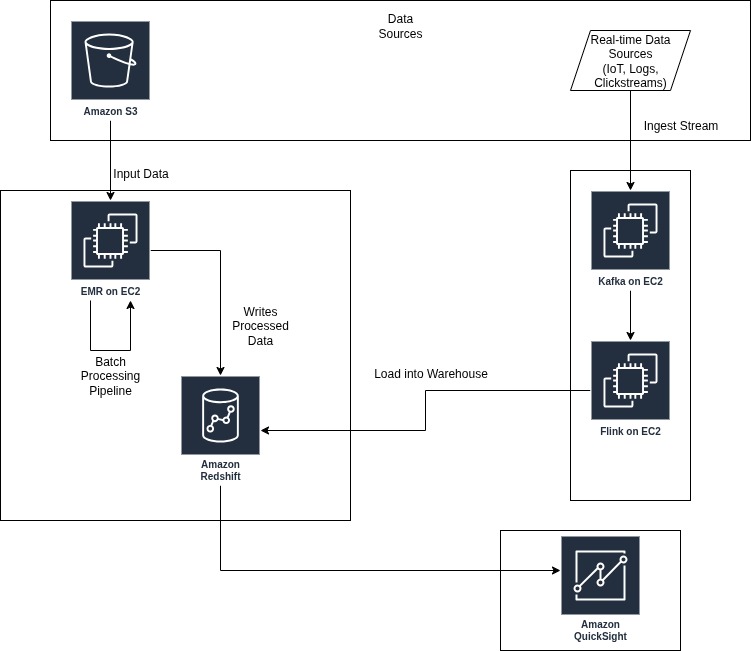
High-Performance Computing (HPC)
Fields like scientific research, genomics, oil & gas simulations, financial modeling, and weather forecasting require immense computational power. Traditionally, such workloads were bound to expensive on-premises supercomputers or compute grids. EC2 democratizes access to HPC by offering specialized instance types,such as the C7g, Hpc6id, and P5 families,that deliver massive parallel processing, high memory bandwidth, and GPU acceleration.
Common Problem Statements:
- How can we run simulations or analyses that require thousands of compute cores without investing in physical infrastructure?
- Can we reduce the time required to get results for complex scientific or engineering workloads?
- How do we ensure consistent performance for tightly-coupled compute jobs?
Solution Architecture:
Use EC2 Cluster Placement Groups for low-latency networking between instances, and launch HPC-optimized instances (e.g., Hpc6id for memory-bound simulations or P4/P5 for GPU workloads). Leverage EFA (Elastic Fabric Adapter) for tightly-coupled workloads that require high-speed interconnects. Pair with Amazon FSx for Lustre for high-throughput, low-latency file systems. This setup rivals traditional supercomputing environments while. offering on-demand provisioning and massive parallelism.
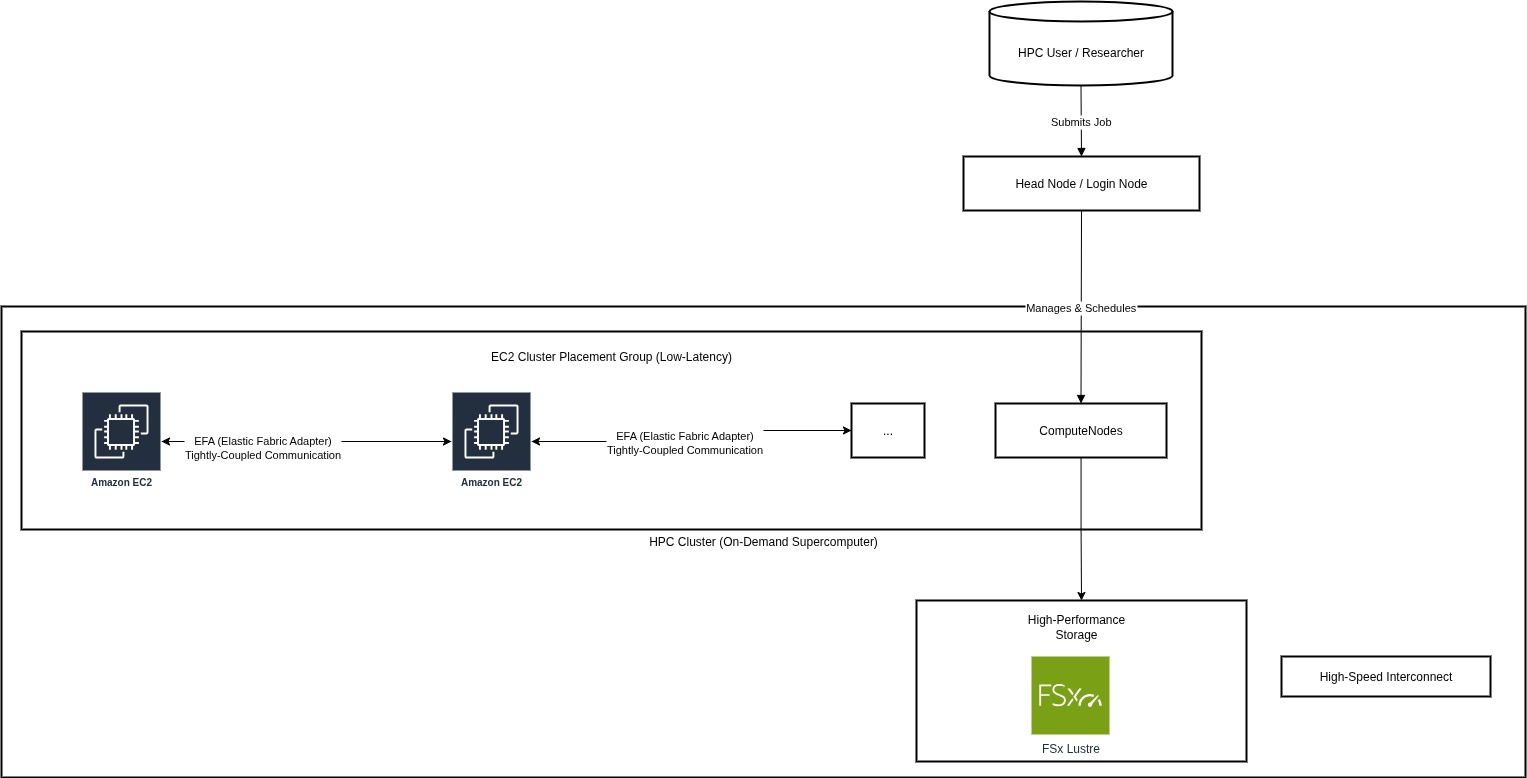
Self-Managed Containers and Kubernetes Clusters
While AWS offers managed services like ECS and EKS, many teams prefer full control over their container orchestration systems, either due to compliance, custom runtime needs, or familiarity. EC2 allows you to run Docker containers or your own Kubernetes clusters (like K3s, Rancher, or full upstream Kubernetes) with complete control over the environment.
Common Problem Statements:
- How do we run containers while maintaining full control over the host system?
- Can we build a hybrid Kubernetes setup between on-prem and cloud?
- What's the best way to run specialized workloads in containers outside of managed platforms?
Solution Architecture:
Use EC2 instances with Docker or containerd to run container workloads directly, or deploy self-managed Kubernetes using tools like kubeadm, Rancher, or Kops. Configure Auto Scaling Groups to add or remove nodes based on cluster demand. Store container images in Amazon ECR, use ELB or ALB for traffic routing, and integrate with CloudWatch for centralized logging and metrics. For hybrid cloud scenarios, connect on-prem clusters via AWS Direct Connect or VPN, maintaining consistent deployment workflows.

Conclusion
Amazon EC2 is not just a compute service,it's a versatile, enterprise-grade platform that underpins everything from web apps and dev/test environments to cutting-edge AI research and big data analytics. Its blend of scalability, control, cost-efficiency, and deep integration with other AWS services makes it the go-to solution for organizations of all sizes. Whether you're launching your first website or running mission-critical workloads, EC2 provides the flexibility and power to grow with your ambitions. In the ever-evolving cloud landscape, mastering EC2 is a vital step toward building resilient, scalable, and future-ready systems.
Stay tuned for our next post in the AWS Bytes series as we continue unpacking the cloud, one service at a time.

